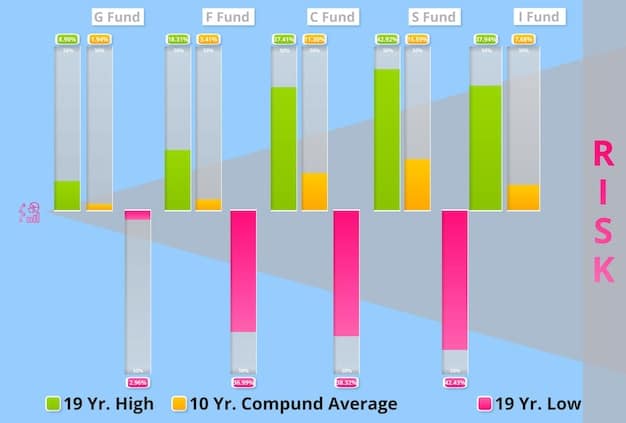Is Bundling Streaming Services Worth It? A Data-Driven Analysis for US Viewers

Bundling streaming services can offer cost savings and convenience for US viewers, but its value largely depends on individual viewing habits and the specific combination of services, as a data-driven analysis reveals varied financial benefits.
In a saturated digital landscape, the question “Is bundling streaming services worth it? A data-driven analysis for US viewers” has become increasingly pertinent. As subscription costs climb and content libraries expand, many consumers seek smarter ways to manage their entertainment budget without sacrificing access to their favorite shows and movies. This exploration delves into the financial and practical implications of bundling, aiming to provide a clear perspective for the American audience.
The Rise of Streaming Bundles: A Market Overview
The streaming industry has evolved dramatically, moving from a few dominant players to a fragmented ecosystem. This growth, while offering unprecedented content variety, has also led to “subscription fatigue,” where viewers feel overwhelmed by the sheer number of services and their cumulative costs. In response, service providers and telecommunications companies have begun offering bundles, hoping to retain subscribers and attract new ones by simplifying choices and offering perceived savings. These bundles often combine video streaming with other services like internet, mobile, or even other streaming platforms.
For US viewers, the landscape of bundled streaming services is diverse and constantly changing. From initial offerings that combined a single streaming platform with a mobile plan to more complex packages featuring multiple video services, the market is adapting to consumer demand for convenience and value. The underlying appeal is clear: streamline billing, potentially reduce overall spending, and access a broader range of content without juggling numerous individual subscriptions. However, the true value of these bundles is not always immediately apparent, requiring a closer look at the actual savings versus individual pricing.
The strategic intent behind bundling is multifaceted. For providers, it’s a powerful tool for customer acquisition and retention, leveraging the appeal of one service to cross-promote others. For consumers, it promises simplicity and cost-effectiveness. Yet, the perception of value can vary greatly based on individual viewing habits and the specific services included. A family whose entertainment needs perfectly align with a pre-selected bundle might find it indispensable, while a single viewer with niche interests might find themselves paying for services they rarely use.

Understanding the Financial Implications: Savings vs. Hidden Costs
At first glance, streaming service bundles often appear to offer significant savings compared to subscribing to each service individually. Promotions frequently highlight percentage discounts or reduced monthly fees. However, a data-driven analysis for US viewers reveals a more nuanced reality, where true value hinges on careful consideration of several factors. It’s essential to look beyond the advertised discounts and evaluate the actual utility and cost-effectiveness for your household.
Decomposing the Advertised Savings
Many bundles tout attractive introductory rates or long-term discounts. While these can be genuine, it’s crucial to understand their duration and any associated terms. Some bundles might lock you into a longer contract, making it difficult to cancel individual components without incurring penalties. Additionally, the advertised savings are typically calculated against the full, non-promotional price of each service. If you’re already leveraging student discounts, annual plans, or other promotions on individual services, the net savings from a bundle might be less compelling than initially presented.
Consider the cumulative effect of price increases across services. Even with a bundle, providers often reserve the right to adjust pricing. While individual services may increase their rates, a bundled package might offer some insulation or, conversely, mask the individual hikes through a single, aggregated bill. Transparency here is key for consumers to make informed choices.
The “Use It or Lose It” Dilemma
- Bundles often include services you might not otherwise subscribe to. While this can expose you to new content, it can also lead to paying for access you rarely utilize.
- Assess your actual viewing habits. Do you watch content across all the bundled platforms regularly, or are you primarily interested in just one or two?
- The cost-per-hour of content watched can be significantly inflated if you’re paying for unused subscriptions within a bundle.
This challenge is particularly relevant for diverse households where different members have varied entertainment preferences. A bundle designed for a broad audience might satisfy some needs but leave others wanting, potentially leading to additional individual subscriptions on top of the bundle, effectively eroding any savings.
Hidden Traps and Fine Print
Beyond direct costs, some bundles come with less obvious considerations. For example, some bundles are tied to specific internet or mobile providers. Switching providers later could mean losing your bundled discount. Data caps, advertising tiers, and quality-of-service variations should also be scrutinized. Does the bundled streaming experience offer the same resolution and ad-free viewing as a premium individual subscription? Often, bundles present the standard ad-supported tiers or lower resolution options, which might not be ideal for all users.
Ultimately, the financial evaluation of streaming bundles requires a personalized approach. What constitutes a good deal for one household may be a poor investment for another. The key is to analyze your current spending, your actual consumption, and the specific terms of any bundle before committing.
Assessing Content Value and Exclusives
Beyond the price tag, the true worth of a streaming bundle for US viewers is intrinsically linked to the content it provides. Many consumers subscribe to services primarily for exclusive shows, movies, and live events. Therefore, a data-driven analysis must factor in whether a bundle effectively aggregates the content you value most, or if it merely adds layers of redundant or uninteresting options.
The allure of exclusives is a primary driver in the streaming wars. Services like Max with its HBO originals, Disney+ with Marvel and Star Wars, and Paramount+ with its extensive library of CBS content, all bank on unique offerings to attract subscribers. When considering a bundle, it’s imperative to verify if it includes the specific content pillars that are non-negotiable for your viewing preferences. A bundle might seem cheaper, but if it doesn’t give you access to your must-see shows, its value diminishes significantly.
Avoiding Content Overlap and Redundancy
- Many bundles may include services with overlapping content, particularly in older movie libraries or syndicated shows. Paying for the same stream on two platforms within a bundle offers no added value.
- It’s crucial to do an inventory of what you watch and where, to ensure the bundled services complement rather than duplicate your current viewing habits.
- Sometimes, a bundle might include a service primarily for sports, while you already subscribe to another for that purpose, leading to unnecessary expenditure.
Understanding which services offer unique content that genuinely diversifies your options is key to maximizing a bundle’s value. Don’t be swayed by the sheer number of services; instead, focus on the quality and uniqueness of their respective libraries as they pertain to your interests.
Evaluating Niche vs. Broad Appeal Bundles
Some bundles are curated for broad appeal, combining popular general entertainment services. Others might target niche audiences, like sports enthusiasts or families with young children. For a household with diverse interests, a broad bundle might initially seem appealing. However, if individual preferences are very specific, a general bundle might result in paying for many channels rarely watched.
Personalized content consumption is paramount. If a bundle locks you into a collection of services, and only one or two genuinely resonate with your household’s viewing patterns, the perceived saving can quickly become an actual overspend. The ideal bundle should align closely with the content preferences of all key viewers in your household, ensuring that the majority of included services are actively utilized.
In essence, content value in a bundle is not about quantity, but about relevance and exclusivity. A bundle is only truly “worth it” if it provides access to content you genuinely desire, without excessive overlap or forcing you to subscribe to services you would never choose independently.
Convenience and User Experience: Beyond the Price Tag
While cost is often the primary concern, the value of streaming service bundles for US viewers extends to the less tangible, yet equally important, aspects of convenience and user experience. Aggregating multiple subscriptions into a single payment and potentially a unified interface can significantly simplify the digital entertainment landscape. However, this convenience is not always guaranteed and can sometimes introduce new complexities.
The appeal of a single bill for multiple services is undeniable. Instead of managing several monthly debits, a bundle consolidates these into one, potentially reducing the administrative burden and making it easier to track entertainment spending. This simplification of financial management is a key selling point for many consumers overwhelmed by the proliferation of subscription services.
Streamlined Access and Discovery
A truly effective bundle should enhance the discovery of content across its included platforms. Ideally, a single interface or smart TV integration would allow users to search for a show or movie and see which of their bundled services offers it. This seamless experience minimizes the frustration of navigating multiple apps to find specific content. When this integration is lacking, the convenience factor diminishes rapidly, forcing users back into the individual app-hopping ritual.
Bundles that actively work towards a unified platform or smart content recommendations across their included services offer a superior user experience. They move beyond mere billing consolidation to genuine ease of use, which can be a significant differentiator in the cluttered streaming market.
The Potential for New Frustrations
- Login headaches: Some bundles still require individual logins for each service, defeating part of the convenience appeal.
- Technical glitches: Coordinating multiple services under one umbrella can sometimes lead to more complex troubleshooting if issues arise.
- Bundle limitations: Certain bundles might restrict access to specific features, higher-quality streams, or simultaneous viewing limits across services.
These potential downsides can erode the perceived convenience. If a bundle means more steps to watch content, or if technical support becomes a convoluted process involving multiple companies, then the benefits of a single bill may not outweigh the operational drawbacks. The promise of simplicity must be delivered upon with practical design and reliable functionality.
Ultimately, a bundle’s value regarding convenience must be weighed against its actual implementation. Does it genuinely simplify your life, or does it merely aggregate costs? For many US viewers, reducing friction in their entertainment consumption is as valuable as saving a few dollars, making a smooth and integrated user experience a critical component of a truly worthwhile bundle.
Demographic and Behavioral Analysis: Who Benefits Most?
A critical aspect of determining “Is bundling streaming services worth it?” involves a close examination of audience demographics and viewing behaviors. A data-driven analysis for US viewers reveals that the benefits of bundling are not universal; rather, they are highly dependent on household composition, entertainment preferences, and specific usage patterns. Understanding these dynamics helps consumers identify if they fall into the ideal demographic for a bundle.
Families vs. Single Viewers
Families with diverse entertainment needs often find bundles more appealing. A bundle encompassing children’s programming (e.g., Disney+), general entertainment (e.g., Hulu), and premium content (e.g., Max) can cater to various age groups and interests under one subscription umbrella. This can be more cost-effective than subscribing to three separate services, especially when considering the potential for multiple simultaneous streams.
Conversely, single viewers or couples with very specific tastes might find bundles less valuable. If a single person primarily watches one or two genres or has a strong preference for a particular service’s exclusives, paying for a broad bundle with many unused components would be inefficient. Their optimal strategy might be to subscribe to individual services month-to-month, allowing for greater flexibility and “churning” between platforms as new content becomes available.
Heavy Viewers vs. Casual Watchers
Frequent streamers who spend many hours accessing content across various platforms are more likely to maximize the value of bundles. For these heavy users, the aggregated content library of a bundle offers a consistent supply of new shows and movies, justifying the combined cost. They are less likely to experience “subscription fatigue” from unused services if they are consistently engaging with the content.
Casual watchers, who might only subscribe to a service for a specific show and then cancel, often gain little from bundles. Their viewing habits are characterized by sporadic engagement and a preference for short-term commitments. A bundle, with its tendency towards longer-term agreements or multiple fixed services, might not align with this flexible approach, potentially leading to unnecessary ongoing costs for services they only briefly use.
Tech-Savvy vs. Tech-Averse Users
Bundles that offer integrated platforms or streamlined access can be particularly beneficial for tech-averse users who prefer simplicity. A single login or a unified search function reduces complexity. For tech-savvy users, the intricacies of managing multiple apps are less daunting, meaning the convenience factor of a bundle might not be as strong a draw.
In summary, the decision to bundle should be a data-driven personal financial analysis for US viewers, aligning with their unique consumption patterns. Bundles tend to favor households with broad, consistent viewing habits and a desire for simplified billing, whereas highly specialized or intermittent viewers might be better served by the flexibility of individual subscriptions.

The Future of Bundling: What to Expect in 2025 and Beyond
As the streaming landscape continues its rapid evolution, predicting the trajectory of bundling for US viewers requires an informed perspective. The strategies employed by media companies and telecommunications providers are constantly adapting to consumer behavior, technological advancements, and competitive pressures. A data-driven analysis suggests that bundling will remain a significant trend, but with notable shifts in its form and accessibility.
Evolving Bundle Structures
Expect to see more nuanced and personalized bundle options. Rather than rigid, pre-set packages, future bundles may allow for greater customization, letting consumers select a core service and add others à la carte at a discounted rate. This “build-your-own-bundle” approach would significantly enhance value by allowing users to tailor packages precisely to their viewing habits, mitigating the “use it or lose it” dilemma. We may also see more thematic bundles, such as “sports-only” or “family entertainment” packages, catering to distinct segments of the audience.
Moreover, the integration of streaming services into broader digital ecosystems will likely deepen. Telecommunication companies could further entrench streaming bundles as part of comprehensive home entertainment and connectivity packages, making it harder to disentangle services but potentially offering greater savings for those who commit to a single provider for all their digital needs.
The Role of AI and Personalization
Artificial intelligence will play an increasingly pivotal role in optimizing bundles. Algorithms could analyze individual viewing data to suggest the most cost-effective and content-rich bundle combinations, alerting users when a new bundle becomes available that better suits their evolving preferences. This proactive personalization could remove much of the guesswork currently involved in comparing options, making the decision-making process more efficient for consumers.
Furthermore, AI could power seamless cross-platform discovery within bundles, creating a truly unified content experience. Imagine asking your smart TV to find a specific actor’s filmography and instantly seeing which of your bundled services has those titles, without manually navigating through separate apps. This level of integration would greatly amplify the convenience factor.
The Challenge of Price Escalation
A persistent challenge will be the ongoing upward trend in subscription prices. As content creation costs soar and platforms seek profitability, individual service prices are likely to continue rising. This puts pressure on bundles to offer ever-more compelling discounts to remain attractive. The question “Is bundling streaming services worth it?” will increasingly hinge on whether providers can maintain significant price differentials between bundled and à la carte options, even as base prices increase.
The future of streaming bundles for US viewers is likely to be characterized by greater flexibility, sophisticated personalization driven by AI, and a continued push for value in the face of rising individual service costs. Consumers will need to remain vigilant and adapt their strategies to maximize their entertainment budget.
Strategies for Maximizing Streaming Bundle Value
Navigating the complex world of streaming bundles requires a strategic approach, particularly for US viewers aiming to optimize both cost and access. A discerning viewer should actively employ methods to evaluate and re-evaluate their subscriptions, ensuring that any chosen bundle continues to deliver genuine value rather than becoming an unrecognized drain on finances. This isn’t just about initial savings; it’s about sustained smart consumption.
One of the most effective strategies involves a regular audit of your existing subscriptions, both individual and bundled. Content libraries evolve, personal preferences shift, and pricing structures change. What was a great deal six months ago might no longer be optimal. Set a reminder to review your streaming expenses and usage every quarter or semi-annually. This proactive approach ensures you’re always aligned with the best available options.
Conducting a Thorough Personal Audit
- Track your viewing habits: Use a spreadsheet or an app to log which services you use most frequently and for which specific shows/movies.
- Compare against individual pricing: Calculate the current à la carte cost of services within your bundle. Has the price difference narrowed or widened?
- Assess content relevance: Are you still actively watching content on all bundled services, or have some become redundant?
This audit should inform your decision to either keep the bundle, modify it if possible, or switch to individual subscriptions that better meet your current needs. It’s a dynamic process, not a one-time decision.
Leveraging Promotional Offers and Flexibility
Be vigilant for new promotional offers, even if you’re already in a bundle. Providers frequently roll out limited-time deals that might be more attractive than your current arrangement. Don’t be afraid to switch bundles or even revert to individual subscriptions temporarily if a better deal emerges. The ability to be flexible and agile in your subscription strategy is a significant advantage in this competitive market.
Consider annual subscriptions: While bundles typically operate on a monthly basis, some individual services offer annual plans at a discount. If you only need a few core services, buying annual passes for those might be cheaper than a bundle that includes services you rarely use. This approach demands a higher upfront payment but can yield substantial long-term savings.
Another smart tactic is to “churn” services. This involves subscribing to a service for a month or two to watch specific content, then canceling it, and repeating the process with another service. This strategy is less compatible with fixed bundles but can be highly cost-effective for viewers who don’t need constant access to a vast library. While bundling simplifies billing, maximizing value often means being aware of all available options and not being afraid to change your subscription mix.
Conclusion: Making an Informed Decision for Your Streaming Needs
Deciding whether “Is bundling streaming services worth it? A data-driven analysis for US viewers” boils down to a comprehensive personal assessment. There’s no one-size-fits-all answer in the dynamic world of digital entertainment. While bundles offer the undeniable appeal of convenience and often the promise of significant savings, their true value is deeply intertwined with individual viewing habits, content preferences, and willingness to scrutinize the fine print.
Our exploration reveals that for certain demographics, such as households with diverse entertainment needs and frequent streamers, bundles can indeed offer a streamlined and cost-effective solution. The consolidation of billing and potential for integrated discovery represent tangible benefits that enhance the overall user experience. However, for those with niche interests, casual viewing habits, or a preference for maximum flexibility, individual subscriptions with strategic monthly churning might prove to be the more financially astute choice.
As the streaming market evolves, characterized by escalating content costs and increasingly sophisticated offerings, consumers must adopt a proactive and data-driven approach to their subscription management. Regular audits of viewing habits, careful comparison of individual versus bundled pricing, and an awareness of new promotional offers are essential strategies for maximizing entertainment value. The future likely holds more personalized and flexible bundling options, but the onus will remain on the consumer to identify which combinations truly serve their needs without inadvertently leading to overspending on unused services.
Ultimately, the best approach for US viewers is an informed one. By understanding the intricacies of content value, financial implications, and the demographic factors that influence bundle efficacy, you can make a decision that enriches your entertainment experience without unnecessarily burdening your budget. The power lies in conscious consumption and regular re-evaluation, ensuring your streaming choices always align with your lifestyle and preferences.
| Key Point | Brief Description |
|---|---|
| 💸 Cost Savings | Bundles can reduce overall monthly expenditure compared to individual subscriptions, but actual savings vary widely. |
| 📺 Content Value | Evaluate if bundled services align with your viewing habits and offer unique content without significant overlap. |
| ✨ Convenience | Single billing and simplified access can enhance user experience, though technical integration varies among bundles. |
| 📊 Demographic Fit | Families and heavy viewers benefit most; niche or casual viewers may find more value in individual subscriptions. |
Frequently Asked Questions About Streaming Bundles
The primary advantages include potential cost savings over individual subscriptions, simplified billing through a single payment, and enhanced convenience with fewer accounts to manage. For households with diverse viewing interests, a bundle can provide a broad range of content to satisfy everyone’s preferences.
To assess actual savings, list the individual monthly prices of each service included in the bundle. Compare this sum with the bundle’s total monthly cost, considering any introductory offers or promotional periods. Also, evaluate how many of the bundled services you would genuinely use.
Potential downsides include paying for services you don’t frequently use, being locked into longer contracts, or encountering content overlap between included platforms. Some bundles might also tie you to a specific internet or mobile provider, limiting flexibility if you wish to switch.
Families with varied content needs and heavy streamers who consistently engage with content across multiple platforms tend to benefit most. These groups are more likely to utilize all or most services within a bundle, justifying the combined cost and enjoying the convenience.
Future trends indicate more personalized and flexible bundle options, allowing greater customization. AI will likely play a larger role in recommending optimal bundles based on viewing habits, and bundles may integrate more deeply into comprehensive digital and telecommunications packages.
Final Thoughts on Streaming Bundles for US Viewers
Ultimately, the decision to bundle streaming services for US viewers is a highly individual one, requiring careful consideration of personal viewing habits, financial priorities, and the specific offerings available. While the promise of convenience and cost savings is appealing, a thorough, data-driven analysis is essential to ensure that a bundle truly aligns with your entertainment needs and budget. By staying informed about market changes, regularly auditing your subscriptions, and understanding the nuances of different bundle packages, consumers can make choices that maximize their entertainment value in an increasingly complex streaming landscape.





